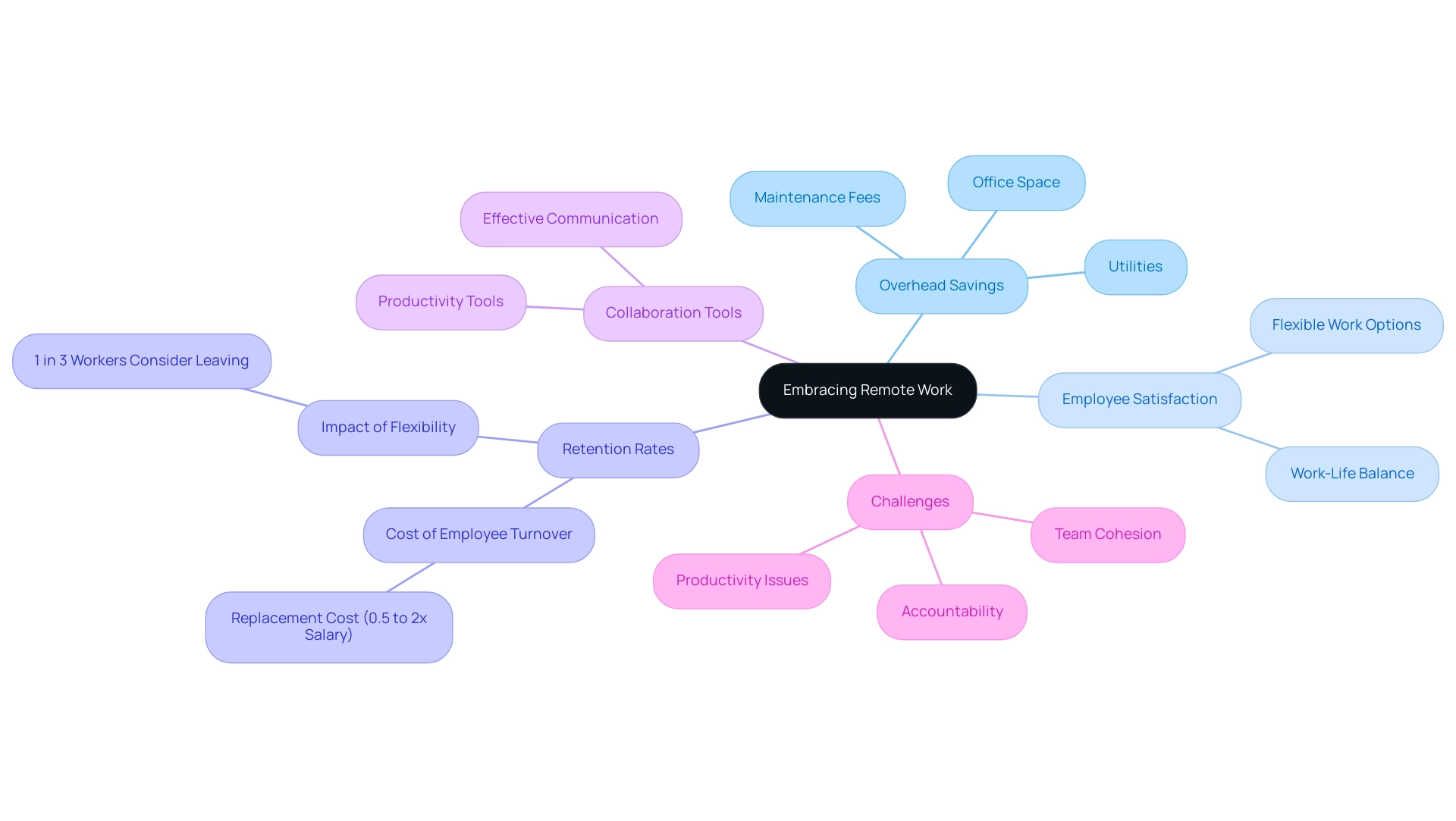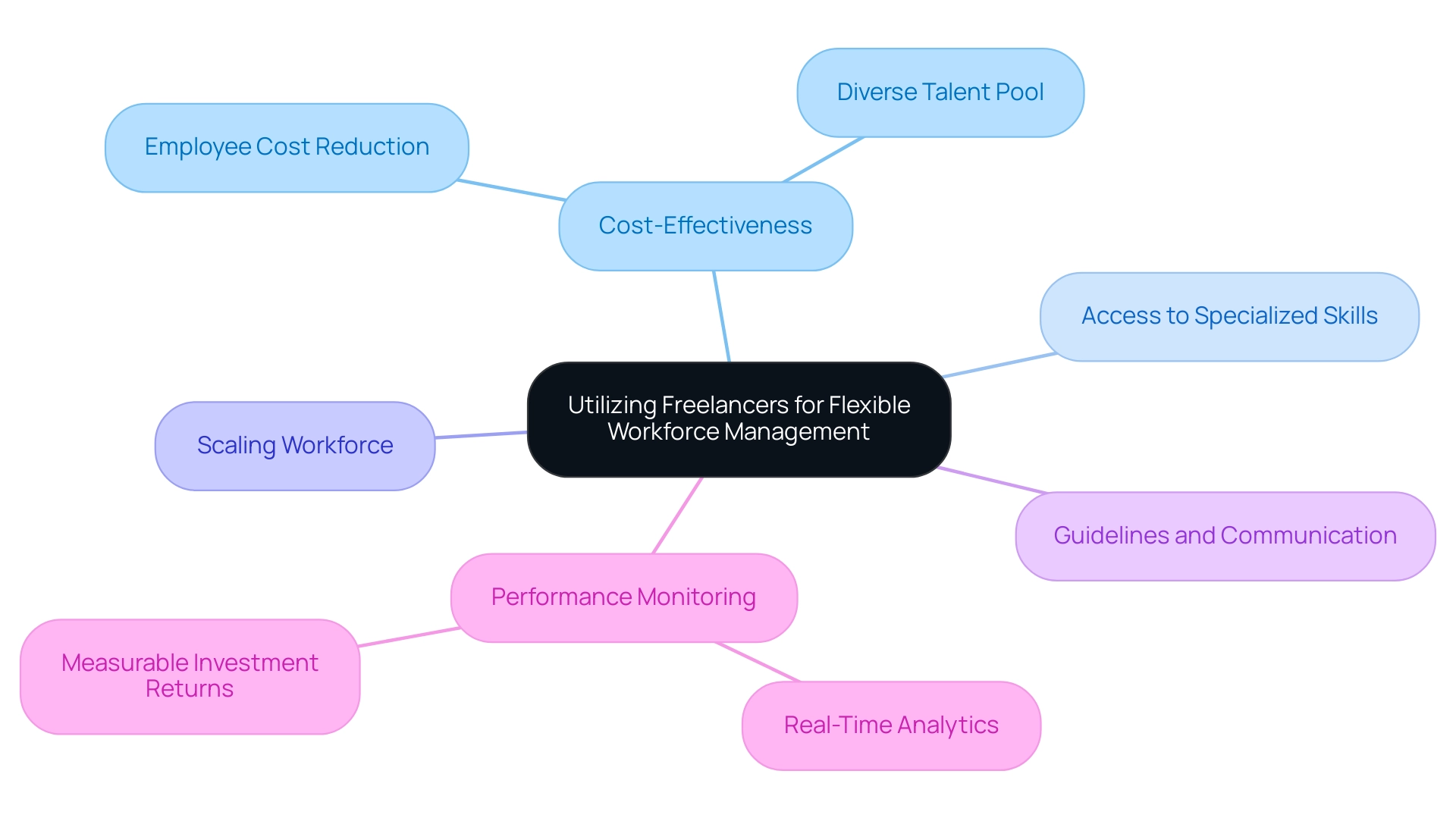Introduction
In an increasingly competitive business landscape, organizations are constantly seeking innovative strategies to optimize costs while enhancing productivity. The integration of technology into employee training, flexible staffing solutions, and process optimization are pivotal in achieving these objectives. By harnessing e-learning platforms, companies can not only reduce training expenses but also foster a more skilled workforce.
Meanwhile, adapting staffing models to embrace flexibility allows for a more responsive approach to labor costs, ensuring businesses remain agile amidst market fluctuations. Additionally, a thorough analysis of existing processes can reveal inefficiencies ripe for improvement, driving significant savings. As the shift towards remote work and freelance talent continues to reshape traditional employment models, understanding how to navigate these changes effectively becomes crucial.
This article delves into actionable strategies that empower organizations to streamline operations, reduce overhead, and cultivate a resilient workforce, all while maintaining a keen focus on cost-effectiveness.
Leveraging Technology for Cost-Effective Employee Training
Investing in technology-enabled training solutions, especially e-learning platforms, is a strategic decision for organizations implementing employee cost reduction strategies to minimize expenses linked to conventional face-to-face training. By adopting online courses, organizations can utilize employee cost reduction strategies to deliver scalable training to employees while eliminating expenses related to travel and venue rentals. In fact, mobile users are completing eLearning courses 45% faster, which highlights the efficiency of these platforms.
Furthermore, incorporating advanced training technologies such as virtual reality (VR) can create immersive learning experiences that not only boost engagement but also enhance learning retention. According to data from Queens University of Charlotte, seventy-five percent of employers consider teamwork and collaboration as 'very important,' underscoring the need for training solutions that foster these skills. A notable case study titled 'Convenience of Online Learning' illustrates this, as online learning offers unparalleled convenience, allowing employees to participate in training activities anytime and anywhere, which is especially beneficial for those with family responsibilities or living in remote areas.
Implementing Learning Management Systems (LMS) further supports this objective by enabling companies to track employee progress and ensure compliance with training requirements. This approach leads to a more skilled workforce while incorporating employee cost reduction strategies—an essential consideration for today's CFOs. The latest advancements in online learning provide access to diverse resources and empower employees to engage in creative projects, reinforcing their learning in practical contexts and creating a dynamic and efficient learning environment that meets modern demands.
Strategic Staffing Solutions to Minimize Labor Costs
To effectively manage labor costs, organizations should consider employee cost reduction strategies, including implementing flexible staffing solutions such as part-time roles, job sharing, and the strategic use of contractors for specific projects. These employee cost reduction strategies enable companies to scale their workforce according to demand fluctuations, thereby avoiding the financial burdens associated with full-time salaries and benefits. Current trends indicate a growing shift towards flexible staffing models, aligning with the evolving needs of the market.
Notably, over 44 states have preemption laws that prohibit localities from improving labor standards for workers, which underscores the necessity for organizations to adapt their staffing strategies in response to regulatory environments. According to industry experts, adopting these employee cost reduction strategies not only enhances cost-effectiveness but also fosters a more adaptive work environment. Additionally, as Todaro highlights, paid leave mandates are favored by voters from various political backgrounds, indicating that companies should contemplate such policies to enhance employee satisfaction and retention, ultimately affecting labor expenses favorably.
Cross-training employees serves as a powerful strategy to boost workforce versatility. By equipping staff with the skills to perform multiple roles, companies can reduce their reliance on external hires while improving operational efficiency. Additionally, a case study on the benefits of collective bargaining illustrates how unionized workers are more likely to receive various workplace benefits, including paid leave and predictable schedules.
This dual strategy of flexible staffing and employee cross-training is one of the employee cost reduction strategies that can result in considerable labor savings, ensuring that organizations remain agile and competitive in an ever-evolving environment.
Optimizing Business Processes for Cost Reduction
A thorough assessment of existing operational procedures is essential for revealing inefficiencies and identifying potential savings, particularly through employee cost reduction strategies in mastering the cash conversion cycle. Implementing employee cost reduction strategies, such as Lean and Six Sigma, can be transformative, enabling organizations to streamline operations, eliminate waste, and enhance productivity. As John Rokus, VP of Lean and Continuous Improvement, states,
'Each week, I live and die by the color-coded project status and automated reminders in LeanDNA.
I can see if there’s a project that needs help and jump in as necessary.'
This highlights the practical application of these methodologies in real-time management and decision-making. However, according to McKinsey, 75% of companies struggle to advance their Industry 4.0 projects beyond the pilot stage, illustrating the challenges in effectively implementing these methodologies.
The evolution of Kaizen, from total quality management to a driving force for growth, provides broader context for the relevance of Lean and Six Sigma in today’s business landscape. Furthermore, implementing employee cost reduction strategies by automating repetitive tasks through advanced software solutions can lead to substantial labor savings and minimize errors, thereby enhancing overall efficiency. By cultivating a culture of continuous improvement, organizations can implement employee cost reduction strategies while also elevating service delivery and customer satisfaction.
Studies indicate that companies leveraging automation effectively can realize significant labor savings through employee cost reduction strategies, exemplifying the potential of optimizing processes to drive profitability. Additionally, the case study titled 'Lean Six Sigma and Industry 4.0' showcases how manufacturers are successfully integrating these methodologies alongside Industry 4.0 technologies, further demonstrating their practical application in achieving operational resilience. To further enhance performance, businesses should focus on the 20 strategies for optimal business performance, including:
- Identifying and planning for underlying issues
- Executing decisive actions
- Continuously updating and adjusting processes based on real-time analytics
Embracing Remote Work to Cut Overhead Expenses
Implementing remote employment policies can serve as effective employee cost reduction strategies by leading to substantial decreases in overhead expenses, including savings on office space, utilities, and maintenance fees. By embracing flexible employment arrangements, organizations not only enhance employee satisfaction but also improve retention rates—an essential factor considering that replacing an employee can cost between one-half to two times their annual salary. Additionally, current trends indicate that 1 in 3 workers would consider leaving their position if flexible options were revoked, emphasizing the need for companies to adapt.
As noted by SelectSoftwareReviews, 'White workers have always topped the charts as the largest in the working class, and that is no exception when it comes to telecommuting,' highlighting the demographic shifts in the workforce. However, concerns regarding responsibility in telecommuting require oversight to guarantee productivity stays elevated. To fully utilize the advantages of telecommuting, it's essential to invest in effective collaboration tools and technology that promote communication and productivity.
This investment guarantees that teams stay connected and involved, irrespective of their physical location, ultimately enhancing organizational efficiency and contributing to employee cost reduction strategies by minimizing expenses related to turnover and recruitment. A case study on the advantages and difficulties of remote work demonstrates that while remote work provides access to a broader talent pool and savings, it also introduces challenges such as reduced productivity and team cohesion, which organizations must manage to enhance their remote work setups.

Utilizing Freelancers for Flexible Workforce Management
Freelancers provide a cost-effective solution for organizations needing specialized skills without the commitment of full-time hires. By leveraging platforms that connect companies with freelance talent, organizations can quickly scale their workforce based on project needs, facilitating streamlined decision-making. This approach not only employs employee cost reduction strategies but also provides access to a diverse talent pool, enhancing innovation and project outcomes.
To effectively identify and mitigate underlying organizational issues, it is critical to establish clear guidelines and communication channels with freelancers. Additionally, by continuously monitoring the performance of freelance contributions through real-time analytics, businesses can translate these insights into measurable investment returns. This process not only supports operationalizing lessons learned but also fosters strong relationships with freelance talent, ultimately contributing to long-term strategic improvements.

Conclusion
Integrating technology into employee training, adopting flexible staffing models, and optimizing business processes are essential strategies for organizations aiming to enhance efficiency while managing costs effectively. E-learning platforms not only reduce training expenses but also deliver scalable and engaging learning experiences. The shift towards remote work and freelance talent further underscores the need for companies to adapt their staffing strategies, allowing for a more agile response to market demands.
Moreover, a thorough analysis of existing processes can unveil inefficiencies, leading to significant savings and improved productivity. Methodologies such as Lean and Six Sigma, along with automation, can transform operations, driving continuous improvement and operational resilience. Embracing remote work not only cuts overhead costs but also enhances employee satisfaction and retention, which are critical in today’s competitive landscape.
By implementing these actionable strategies, organizations can cultivate a resilient workforce while maintaining a keen focus on cost-effectiveness. As the business environment continues to evolve, prioritizing these initiatives will be key to sustaining growth and competitiveness. Now is the time to take decisive action and leverage these insights to optimize operations and drive profitability.
Frequently Asked Questions
What are the advantages of investing in e-learning platforms for organizations?
Investing in e-learning platforms allows organizations to reduce costs associated with traditional face-to-face training, such as travel and venue rentals. It also provides scalable training options and enables mobile users to complete courses 45% faster, enhancing efficiency.
How can advanced training technologies like virtual reality (VR) benefit organizations?
VR creates immersive learning experiences that boost engagement and enhance learning retention, making it a valuable addition to training programs.
Why is teamwork and collaboration important in training solutions?
Seventy-five percent of employers consider teamwork and collaboration as 'very important,' indicating a need for training solutions that foster these skills among employees.
What is the role of Learning Management Systems (LMS) in employee training?
LMS helps organizations track employee progress and ensure compliance with training requirements, leading to a more skilled workforce while supporting employee cost reduction strategies.
What are flexible staffing solutions, and why are they important?
Flexible staffing solutions include part-time roles, job sharing, and the use of contractors, allowing organizations to scale their workforce according to demand fluctuations and avoid the financial burdens of full-time salaries.
How can cross-training employees contribute to cost reduction?
Cross-training enhances workforce versatility, reducing the need for external hires and improving operational efficiency, thus leading to potential labor savings.
What methodologies can organizations implement to streamline operations and enhance productivity?
Organizations can implement Lean and Six Sigma methodologies to eliminate waste, streamline operations, and enhance productivity.
How does remote employment serve as a cost reduction strategy?
Remote employment policies can significantly reduce overhead expenses related to office space, utilities, and maintenance, while also improving employee satisfaction and retention rates.
What are the challenges associated with remote work?
While remote work offers benefits such as access to a broader talent pool, it can also lead to challenges like reduced productivity and team cohesion that organizations need to manage.
How can freelancers benefit organizations looking to reduce costs?
Freelancers provide specialized skills without the commitment of full-time hires, allowing organizations to scale their workforce based on project needs and enhancing innovation and project outcomes.




